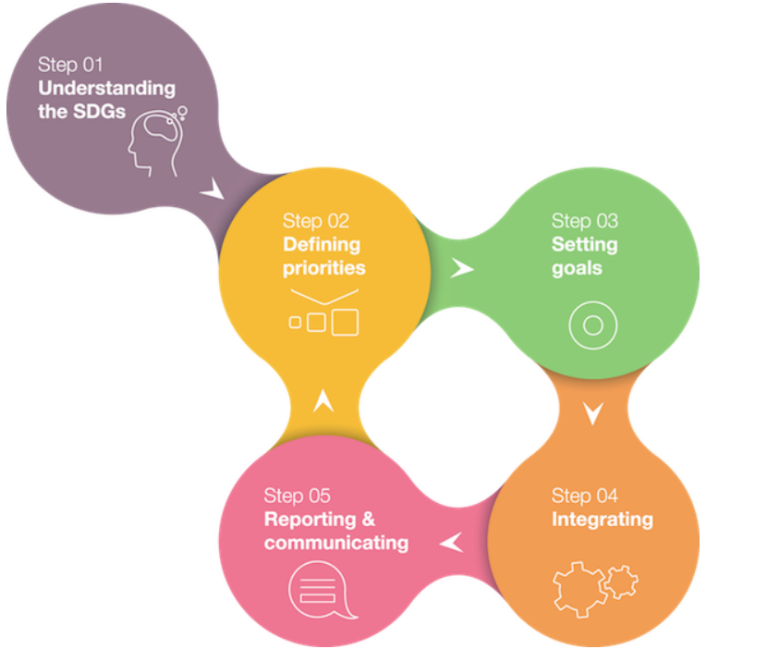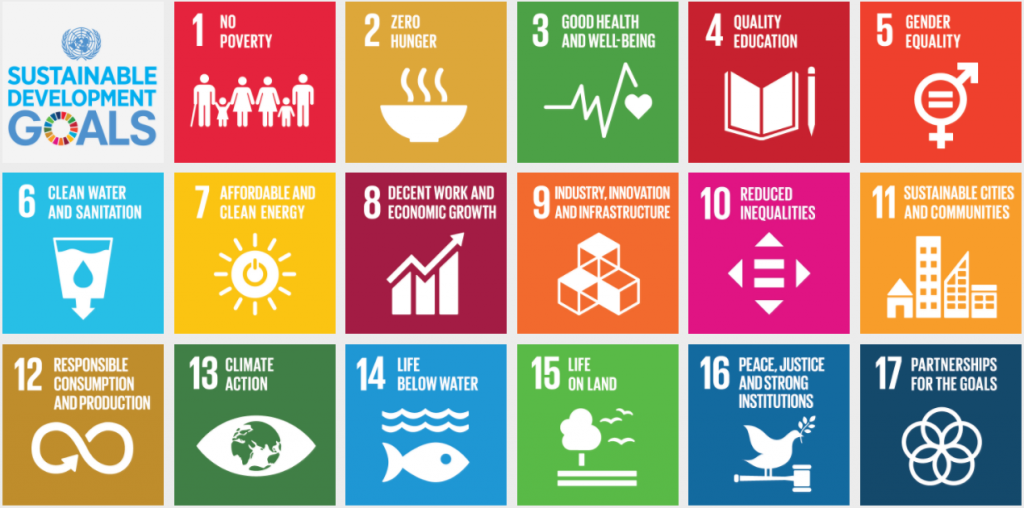The SDGs are becoming increasingly important in the economy. This is particularly evident in sustainability reporting practice, as CSR reporting is undergoing change. More than 80 % of all DAX30 companies have already integrated the SDGs (in several forms) into their recently published sustainability reports (see Umweltdialog, 30th August 2017).
With the entry into force of the SDGs (Sustainable Development Goals) at the beginning of 2016, the sustainability initiatives GRI (Global Reporting Initiative), UNGC (United Nations Global Compact) and WBCSD (World Business Council for Sustainable Development) have developed the SDG Compass to help companies dealing with the SDGs.
SDG Compass – an overview
- The SDG Compass: 30 pages
- Five implementation steps (circular process, see Fig. 1)
- Translations in 13 languages (the English version is available here) & one summary
- Goal: to support companies in adapting their strategies to the SDGs as well as in measuring and managing their SDG contribution
Fig. 1: the five implementation steps of the SDG Compass (source: website SDG compass)
The SDG Compass is a detailed step-by-step guide on how companies can align their actions with the SDGs to contribute to sustainable development. The contents of the individual steps are briefly explained below:
Step 1: Understanding the SDGs
The first step includes the basis – understanding the SDGs:
- The SDGs are 17 UN-defined sustainability goals designed to contribute to global sustainable development (e. g. ending poverty and hunger, access to clean energy, etc.)
- Each development goal has specific sub goals and indicators
- Companies can use the SDGs as a source of inspiration for sustainable business models, product innovation, talent recruitment and more
- You can also find more information about the SDGs in our blog and on our website
Fig. 2: the 17 SDGs defined by the UN (source: Sustainable Development Knowledge Platform)
Step 2: Defining priorities
Not all SDGs are equally relevant to businesses. Therefore, it is important to identify the main areas of action within a company that can contribute to positive sustainable development through the (applicable) SDGs:
- Carry out an impact analysis (recognizing the most impactful value chain areas)
- Collect appropriate data (quantifying of entrepreneurial activities and so on)
- Prioritize the strategic areas to deal with the material SDGs (e. g. areas with serious risks)
Step 3: Setting goals
After having identified the material SDGs and the related strategic plan, the SDG Compass recommends defining appropriate targets in order to measure companies progress:
- Specify the goals and define appropriate KPIs (support is available here: website of the SDG compass)
- Determine baseline and context for goals (e g. increase in trainee quote by 40% by end of 2020 at locations in developing countries compared to the baseline at the end of 2015)
- Define the degree of ambition
- Align on the SDGs
Step 4: Integrating
In this step, it is important to include the defined goals into the core business:
- Integrate sustainability and related goals (SDGs) as part of all business divisions & processes
- Form partnerships for the common achievement of sustainability goals (e. g. with suppliers, industry initiatives)
Step 5: Reporting & communicating
The next step is to disclose the identified aspects of the SDGs as well as the related goals and the reached progress:
- Within the (corporate) sustainability reporting or
- Singular communication (e. g. social media, own SDG report)
Support by the DFGE
The DFGE supports you regarding the SDGs, their strategic integration into the core business as well as in all related processes and steps. In addition, we make your efforts transparent, for example through a GRI report. Contact us for your Sustainability Intelligence at or +49.8192.99733-20.











